Cyprus: Pope Visits Chrysostom II
Highest Authority of the Autocephalous Orthodox Church of Cyprus
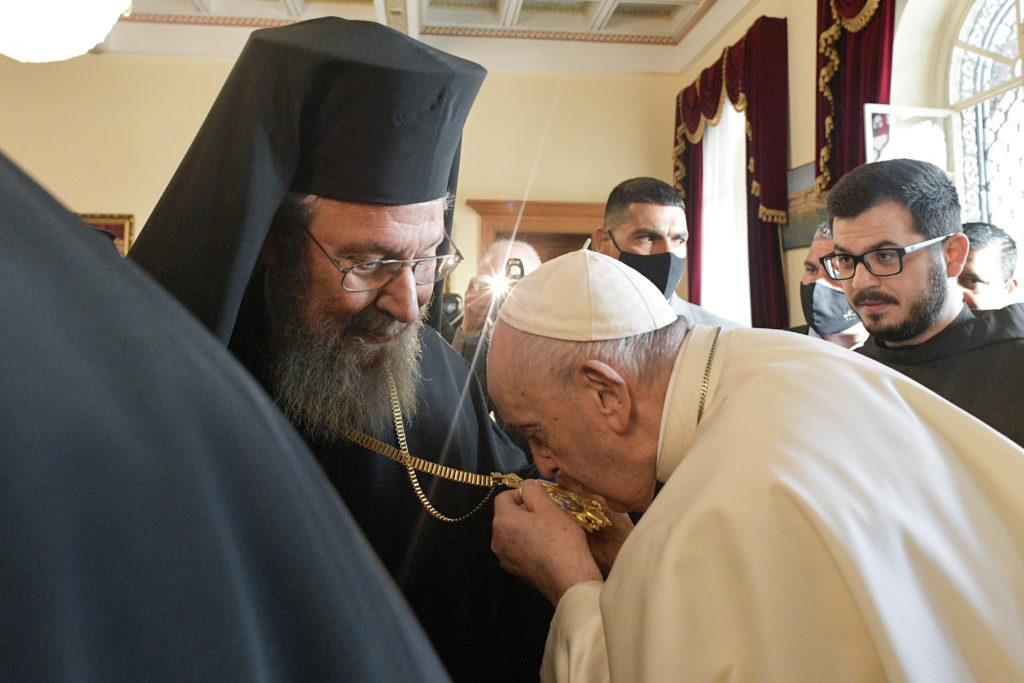
The first activity planned for Pope Francis, on his second day in Nicosia, was a courtesy visit to Chrysostom II, Archbishop of Nea Justiniana and All Cyprus, highest authority of the country’s autocephalous Orthodox Church, in the Orthodox Archbishopric Palace of Cyprus.
Chrysostom II
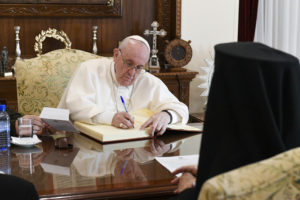
Was born in Tala, Paphos, on April 10, 1941. Ordained Deacon on November 3, 1963, he studied at the School of Theology of the University of Athens. He was ordained a priest on November 12, 1972, by the then Archbishop of Cyprus, Makarios III. From 1972 to 1978 he was aegumen (Abbot) of the Agios Neophytos Monastery of Paphos. On February 26, 1978, he was elected Metropolitan of Paphos, a post that he held until his election as Archbishop of Nea Justiniana and All Cyprus in October of 2006.
Previously, he held this post as “locum tenens” of Chrysostom I — who was seriously ill at that time –, and, as such, he represented the Holy Synod of the Orthodox Church of Cyprus at Saint John Paul II’s funeral on April 8, 2005, and in the Mass at the beginning of Benedict XVI’s pontificate, on April 24, 2005. In response to this fraternal gesture, Benedict XVI sent a delegation to Chrysostom II’s enthronement ceremony in the Cathedral of Lefkosia.
Later, Chrysostom II met with Benedict XVI on three occasions: on June 16, 2007, when he was received in audience in the Vatican and signed a Joint Declaration with the Pontiff; on June 5, 2010, on the occasion of the now Pope Emeritus’ Apostolic Journey to Cyprus, when he handed him the Instrumentum Laboris of the Special Assembly of the Synod of Bishops for the Middle East, which took place in October of that year; and on March 28, 2011, again in the Vatican.
Reinforce the Good Relations
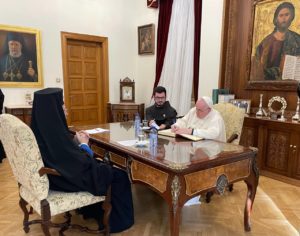
In fact, the first Pope to visit Cyprus was Benedict XVI in 2010. The trip showed the good ecumenical relations that still exist between the Vatican and the Cypriot Orthodox Church.
This new meeting with Pope Francis, followed by the other with the Cypriot Orthodox Holy Synod, are ecumenical gestures to continue securing the relations between Catholics and Orthodox in this country.
Signature in the Book of Honour
Shortly before 8:30 am local time (7:30 am in Rome), the Holy Father was received at the entrance of the Archbishopric’s Palace by a representative of the Holy Synod. Then Chrysostom welcomed Francis and the presentation took place of the different delegations present.
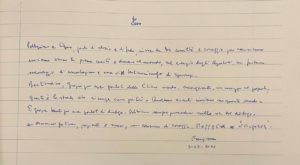
During the subsequent private meeting, in addition to talking for a few minutes, the Pontiff signed the Book of Honour, writing: “Pilgrim in Cyprus, pearl of the history of the faith, I invoke from God the humility and courage to walk together towards full unity and to give the world, like the Apostles, a fraternal message of consolation and a living testimony of hope.
Your Beatitude, thank you for speaking of Mother Church in the midst of the people. This is the path that unites us as Pastors. Let us advance together on this path.
And thank you very much for speaking of dialogue. We must always advance on this path of dialogue, a laborious, patient, and sure path, a path of courage. ‘Parrhesia and patience’ (in Greek).”
At the end of this meeting, the Holy Father went to the Orthodox Cathedral to meet with the Holy Synod.
Translation by Virginia M. Forrester
Related

Cardinal Parolin at the Novendalia Mass: “Mercy leads us to the heart of faith”
Exaudi Staff
27 April, 2025
8 min
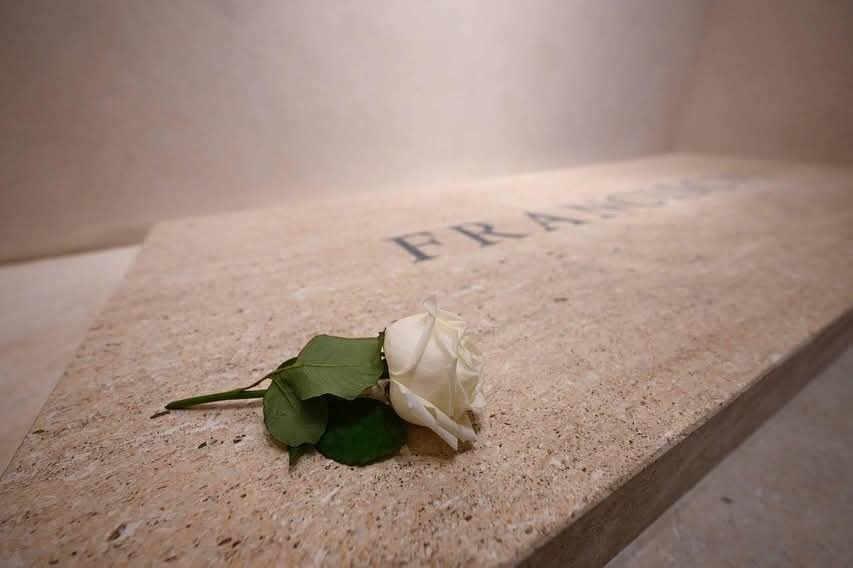
Pope Francis’ Tomb in Santa Maria Maggiore
Exaudi Staff
27 April, 2025
1 min
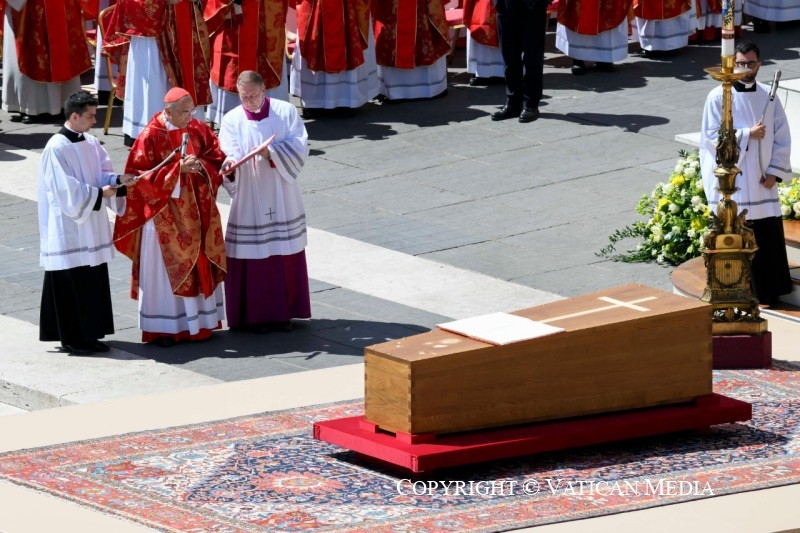
Mercy and the joy of the Gospel are two key concepts of Pope Francis
Exaudi Staff
26 April, 2025
9 min

Thousands of faithful bid farewell to Pope Francis in St. Peter’s Square
Exaudi Staff
26 April, 2025
2 min
 (EN)
(EN)
 (ES)
(ES)
 (IT)
(IT)

